The journey to Diani Beach often begins in Nairobi. Taking the train south, the scenery unfolds like a moving postcard: rolling hills, red earth, small houses with tin roofs, families tending to fields. It’s a preview of Kenya’s rhythm—land and life intertwined.
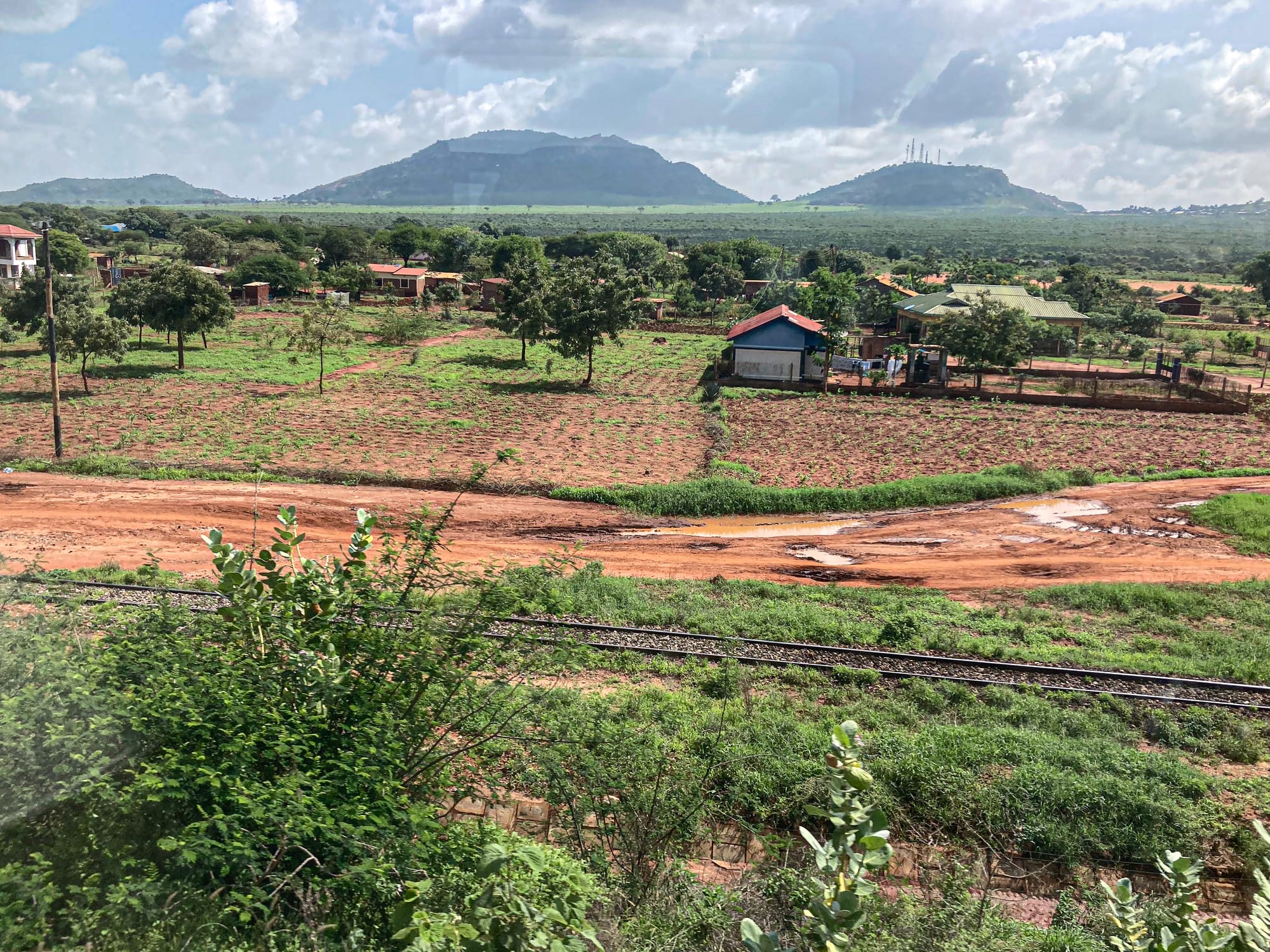
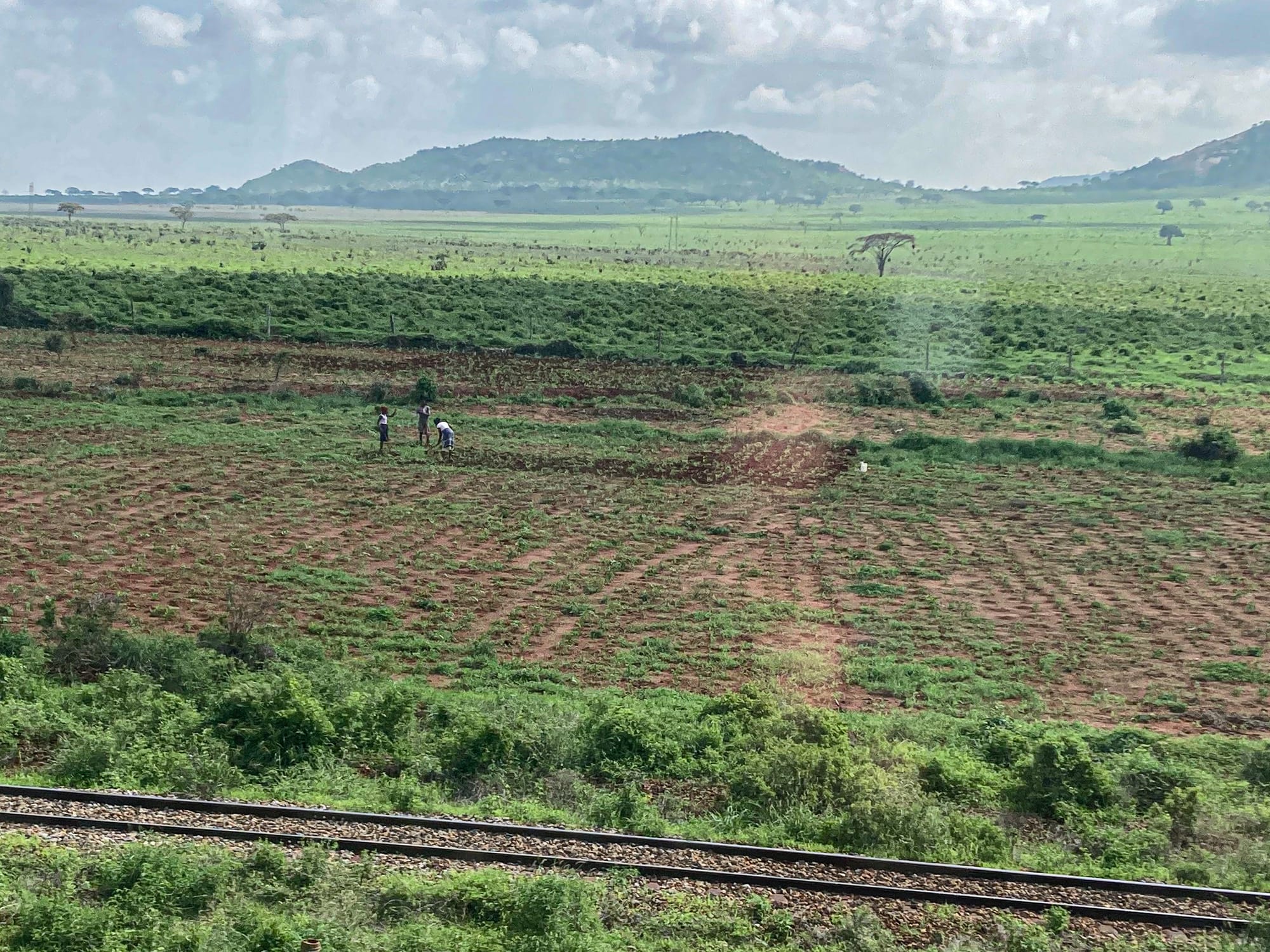
Scenes from the train ride to Diani
By the time you arrive at the coast, the shift is palpable. The air grows humid, the pace slows, and the Indian Ocean pulls everything toward its tides. Diani is at once a resort town and something much deeper.
The beach that defines Diani
It’s impossible to overstate the beach. White sand stretches for kilometers, meeting warm turquoise waters that stay swimmable all year round. A reef sits just offshore, calming the waves and making the shoreline feel like an endless pool. Kitesurfers carve the horizon, children play in the shallows, and travelers slip easily between cafés and ocean dips.
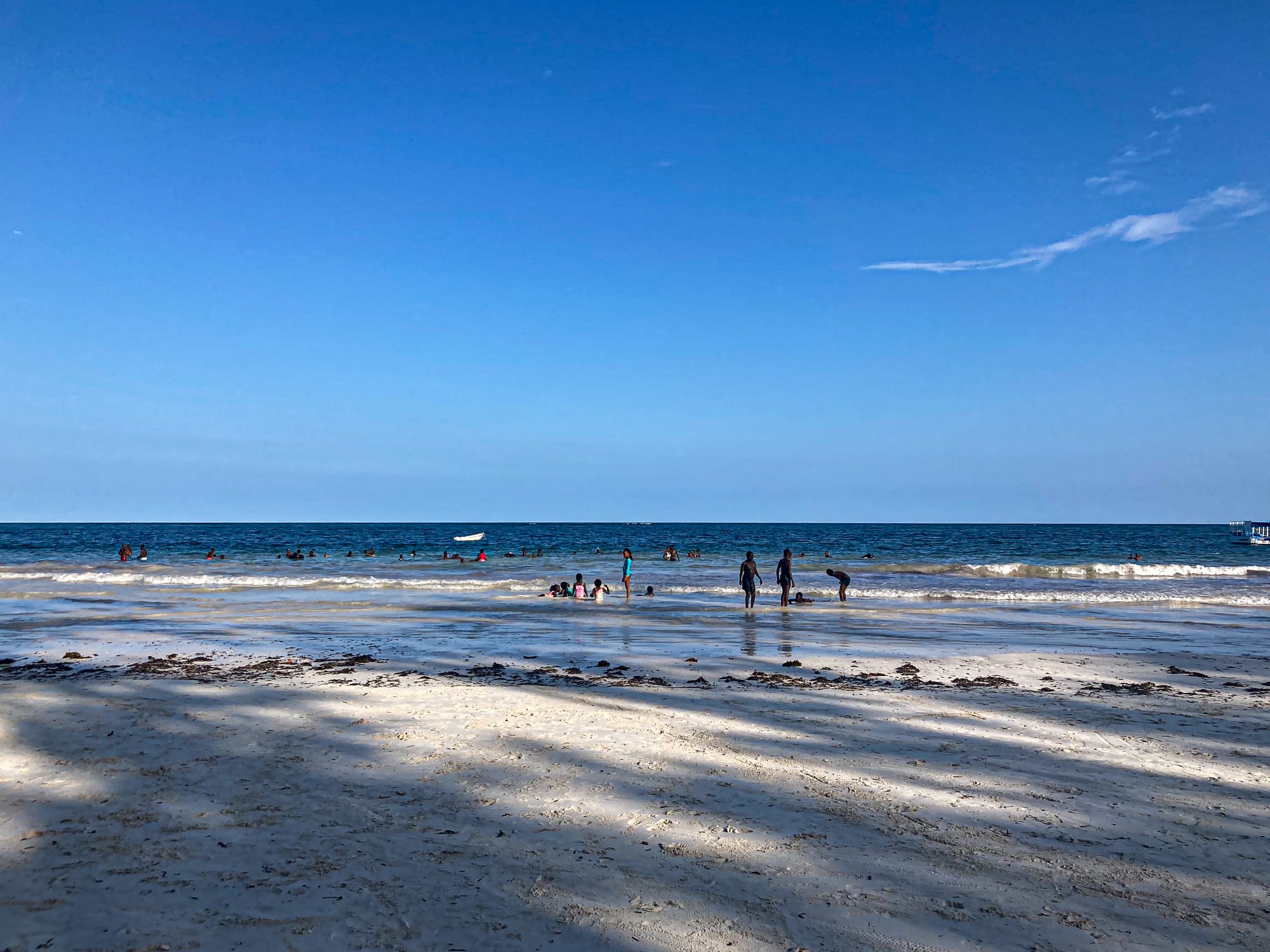
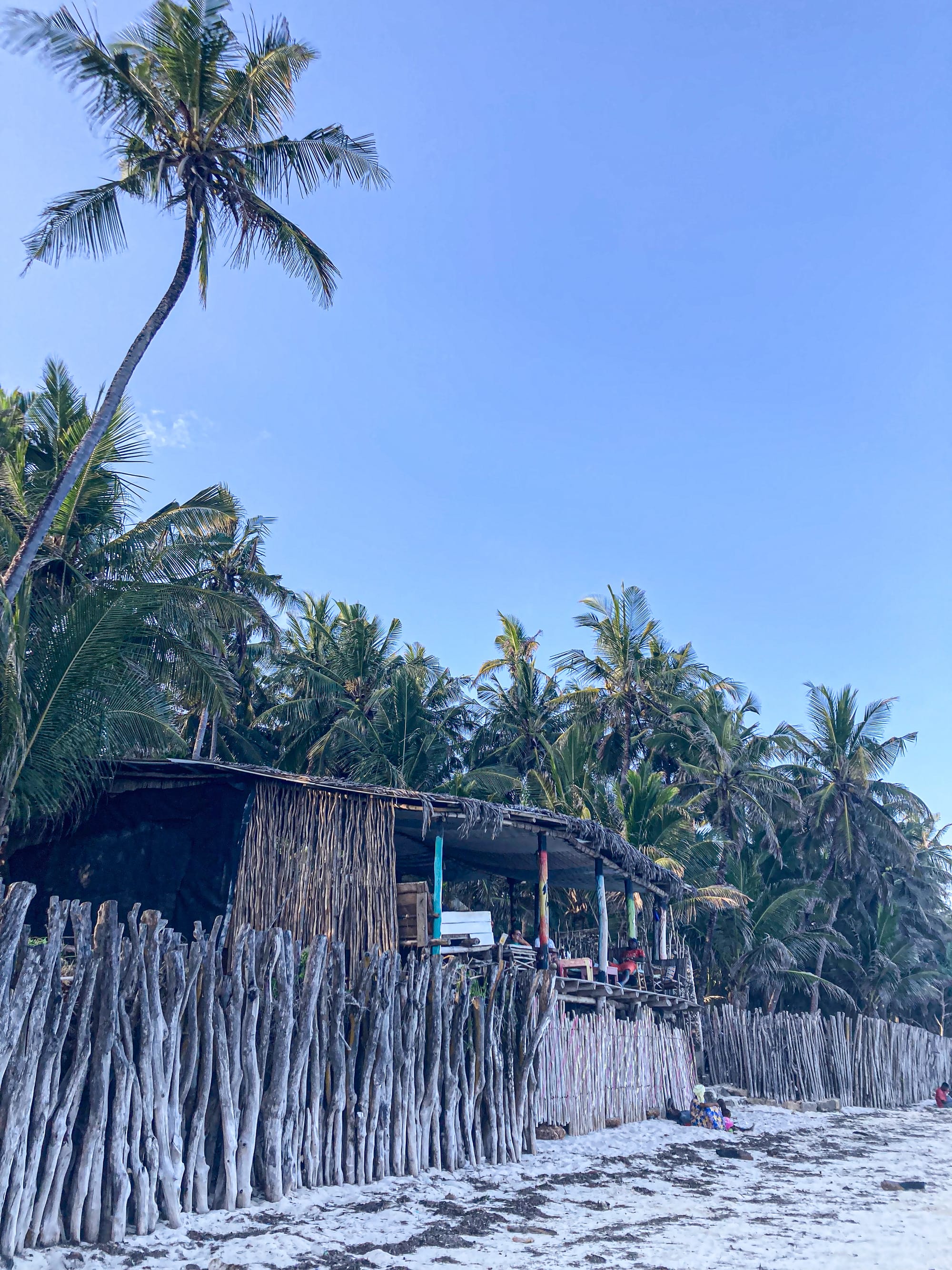
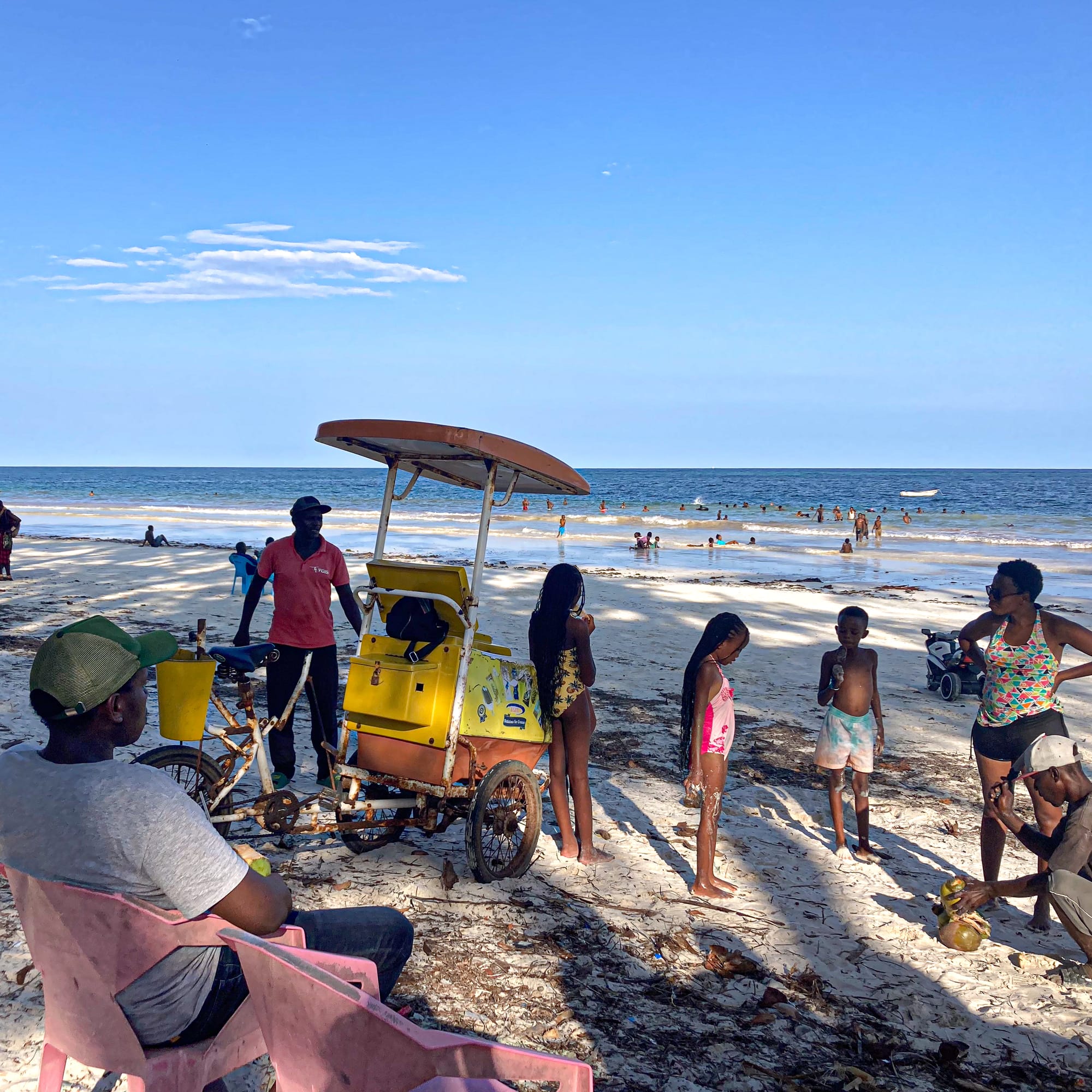
Rustic beach bars and cafés tucked among palm trees, and families gathering by the shore
There are beachfront restaurants where you can order a smoothie and feel the spray of the tide on your feet.
Working by the ocean
Thanks to Skippers Coliving, Diani has become more than a holiday spot, and now welcomes nomads staying several months to live and work from there. Power cuts still happen along the coast, but in Skippers your internet connection has multiple backups.
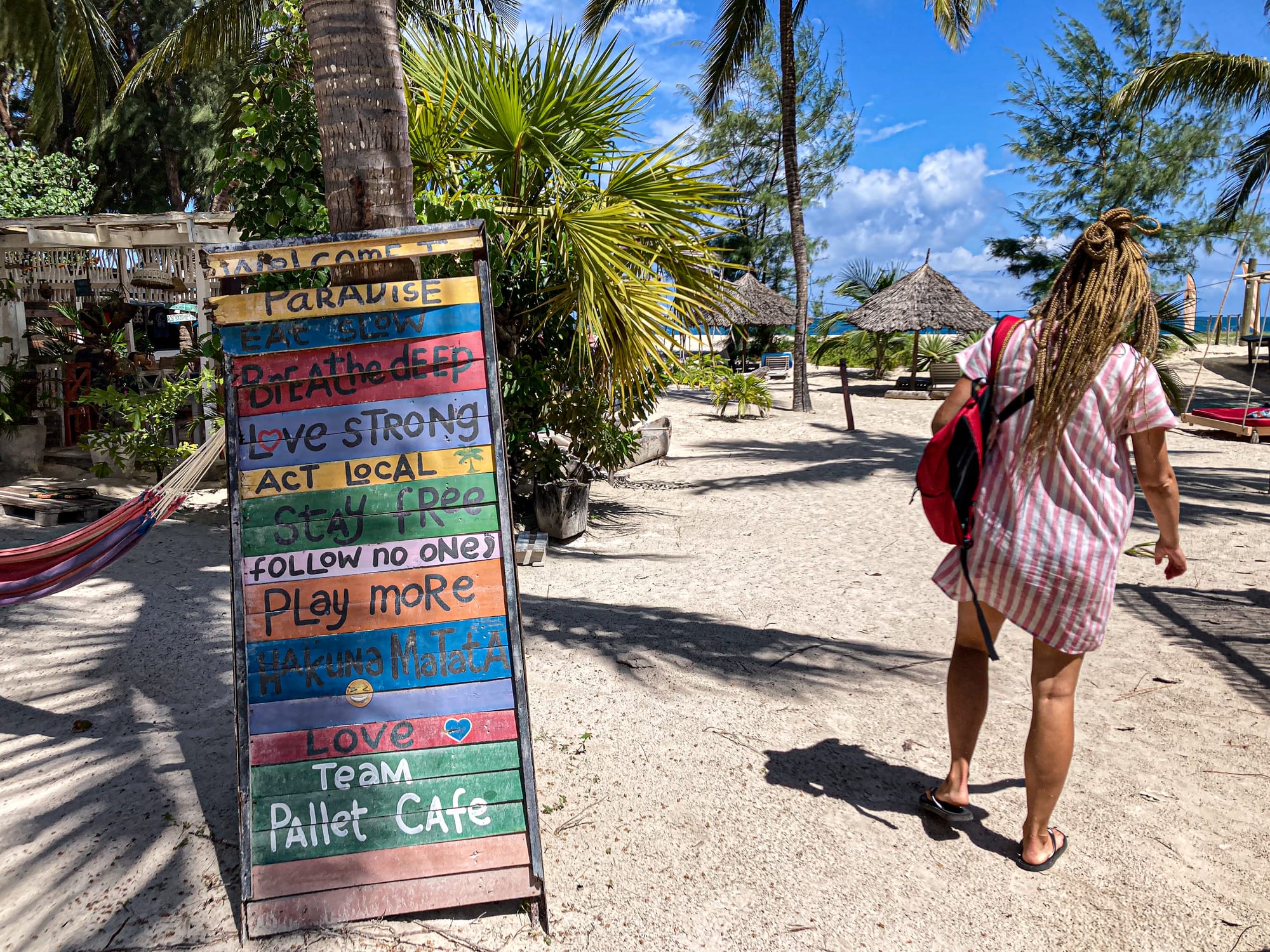
The rhythm of work here is unlike anywhere else. You take calls barefoot, the hum of palm trees replacing the drone of city traffic. Slack messages compete with the sound of waves. And when the laptop closes, the ocean is just a few steps away.
Food in Diani Beach
The local cuisine bridges global influence and Swahili flavor. Along the coast, you’ll find beach grills serving freshly caught fish and coconut curries that speak to centuries of Swahili tradition, while inland eateries prepare ugali with sukuma wiki, chapati, and beans—staples of everyday Kenyan life. At the same time, the international presence of travelers and long-term residents has inspired a wave of global options.
Our favorite spot to eat was Tribearth, a fully vegan café that feels equal parts community hub and creative kitchen. Tucked just off the main road, it offers an atmosphere that’s relaxed but intentional, with shaded outdoor seating and a menu that surprises you with its range. We especially loved their Ethiopian platter, a generous spread of spiced lentils, greens, and injera, as well as their vegan chapati wraps, which were hearty, flavorful, and perfect after a morning on the beach. More than just a café, Tribearth positions itself as part of a broader movement for plant-based living on the Kenyan coast.
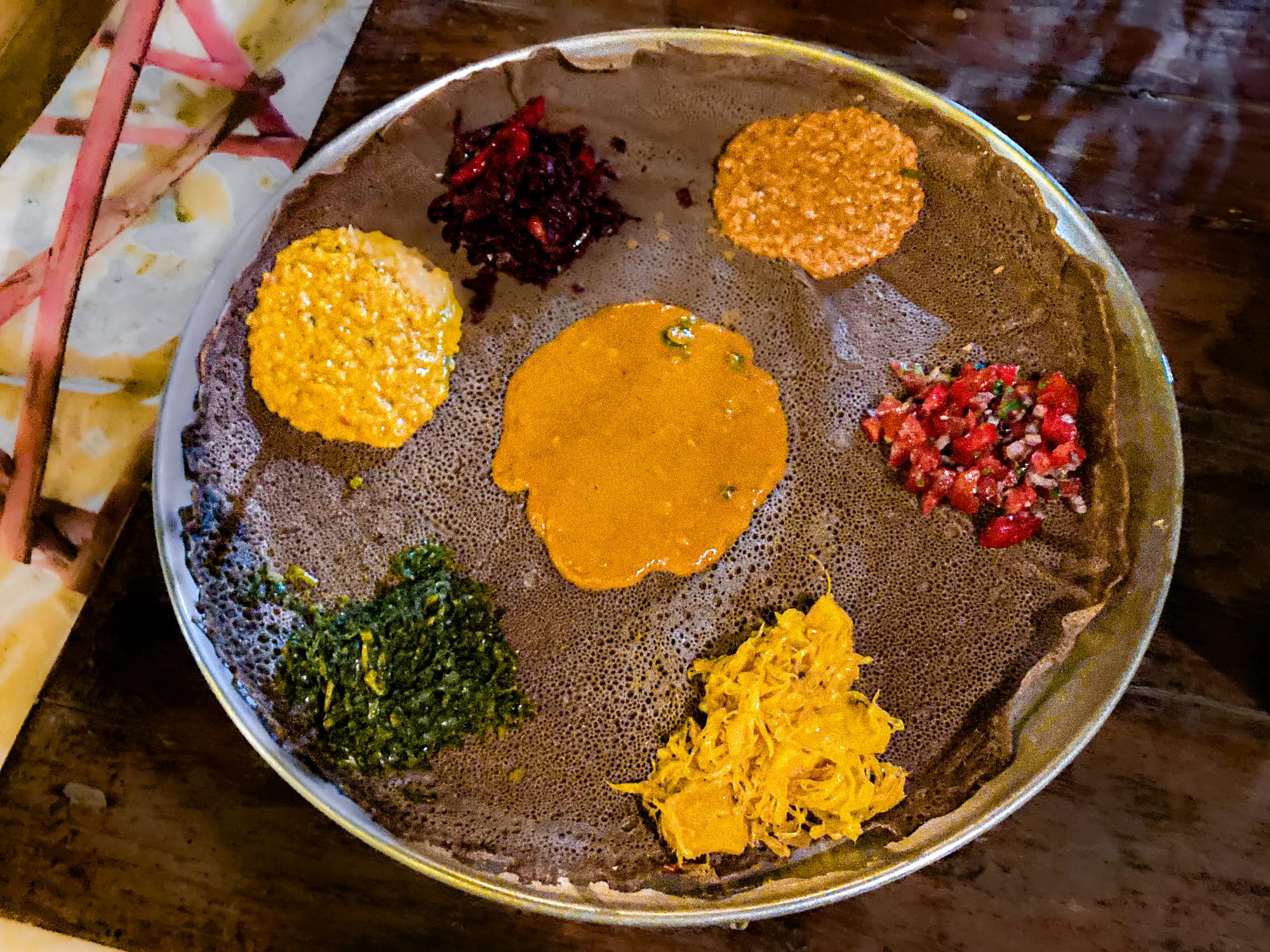
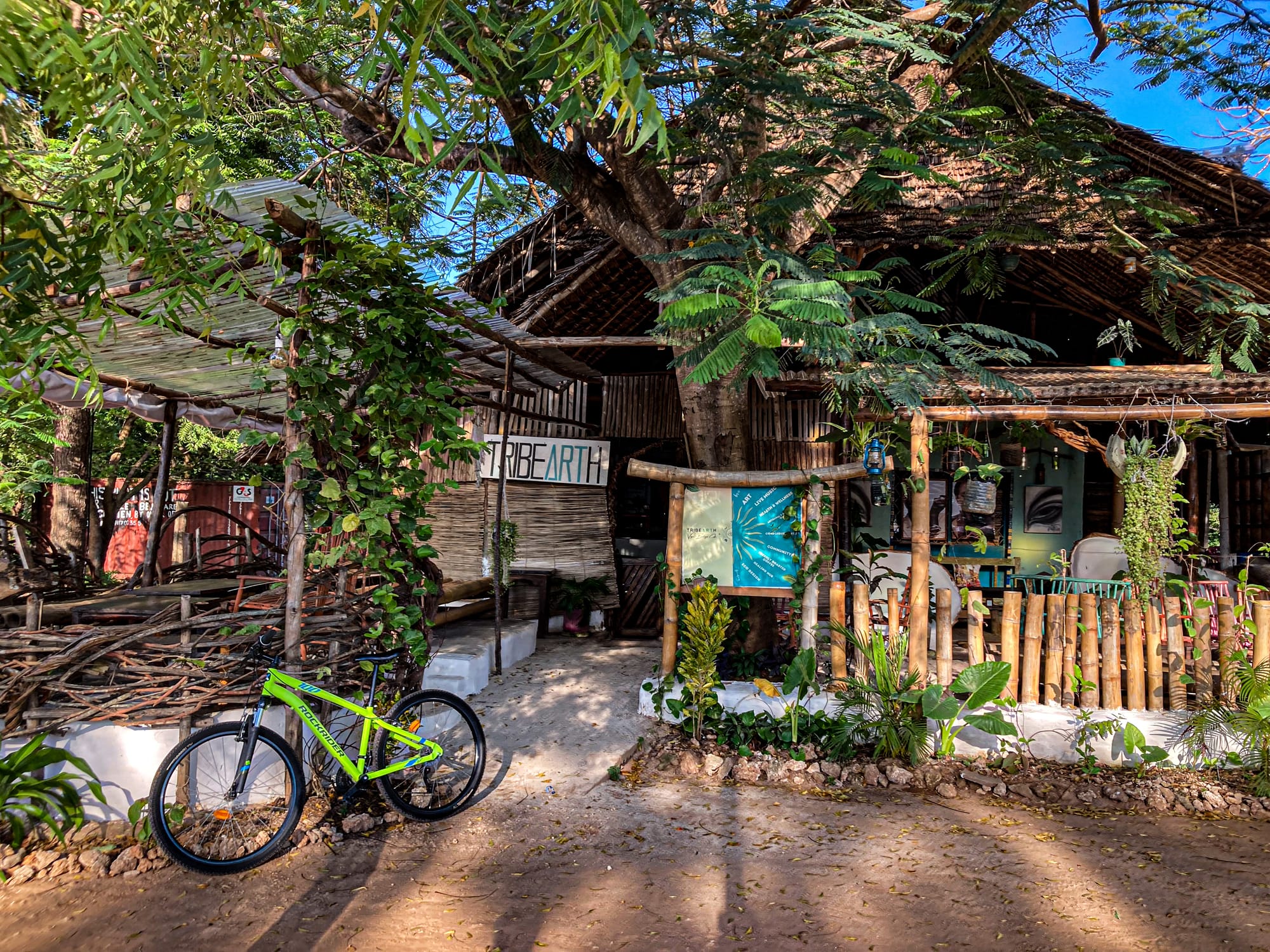
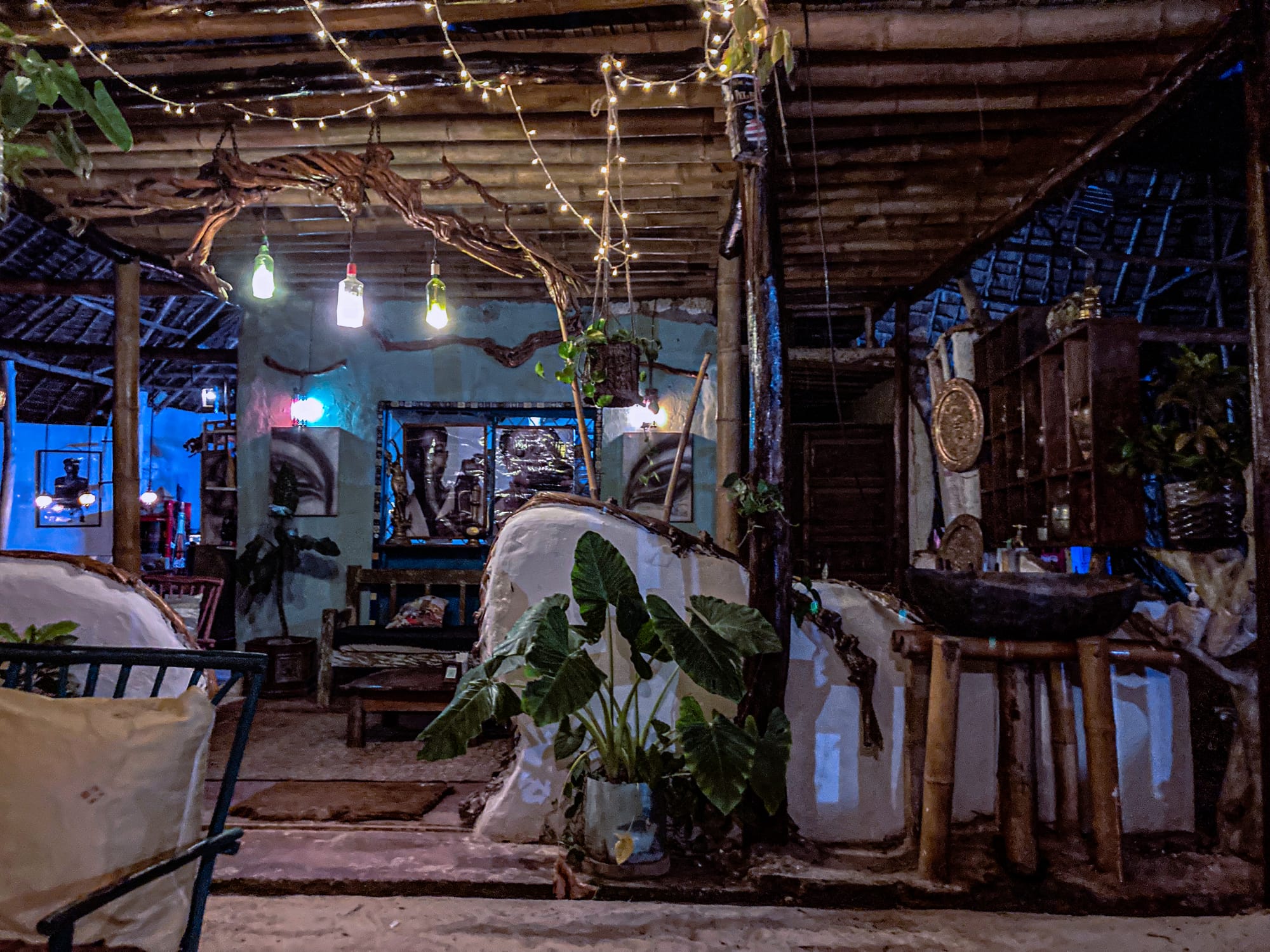
Tribearth's inviting and creative atmosphere
Kokkos and Pita Pan were other favorites of ours, each having several vegan options.
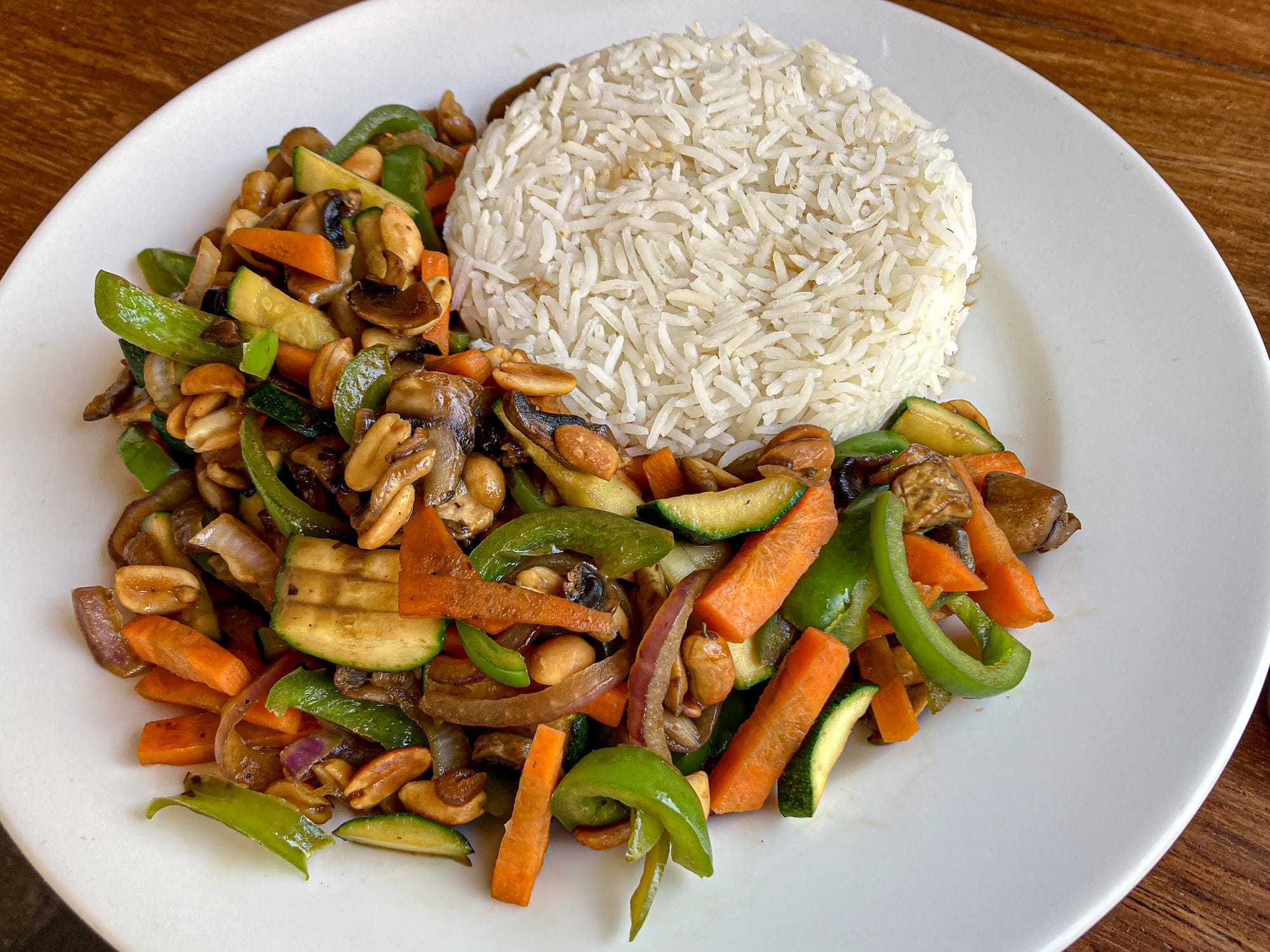

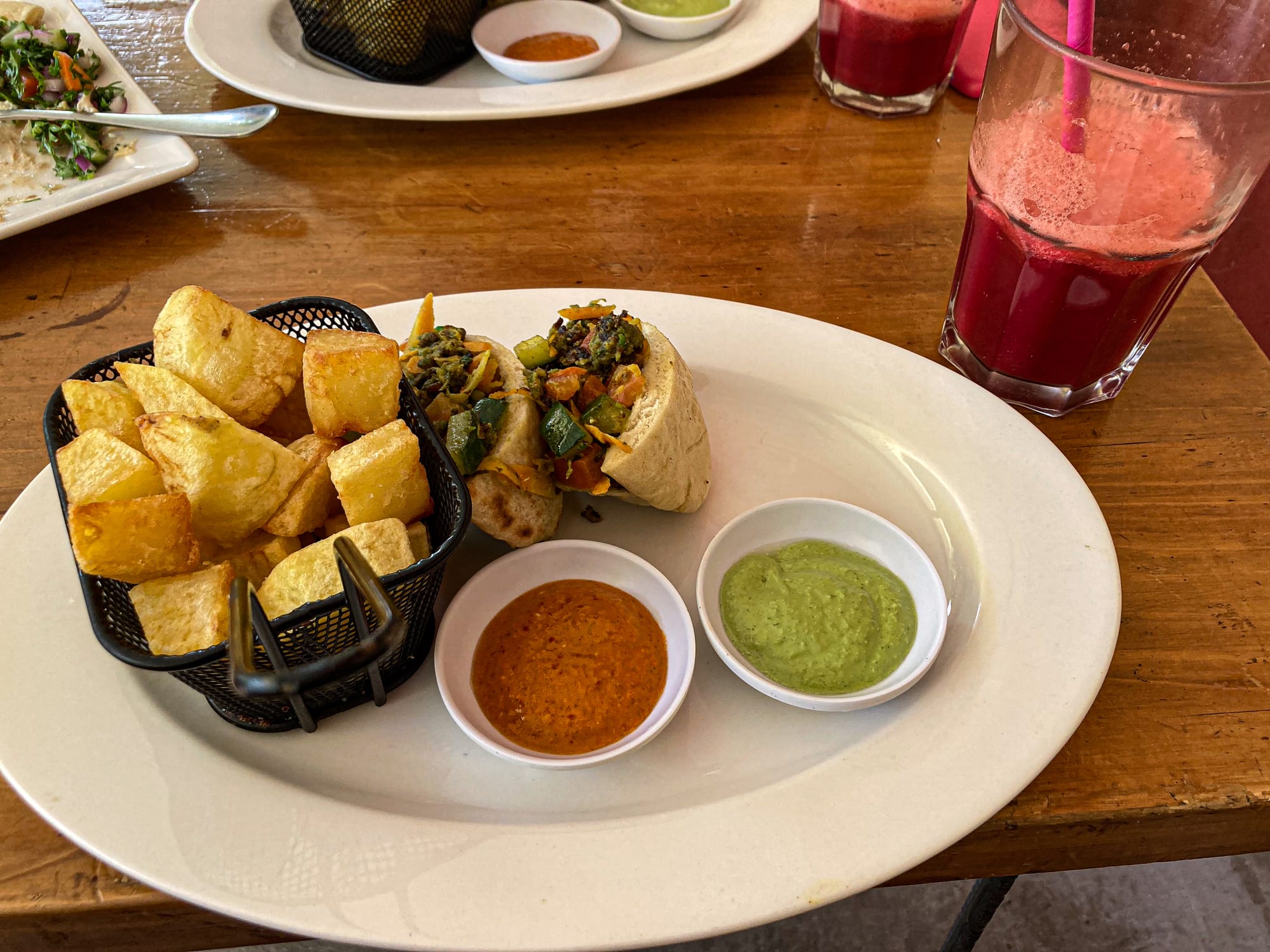
Vegan dishes from Kokkos and Pita Pan
If you want to keep things simple and are staying at Skippers, we highly recommend their poke bowls, a fresh and healthy option.
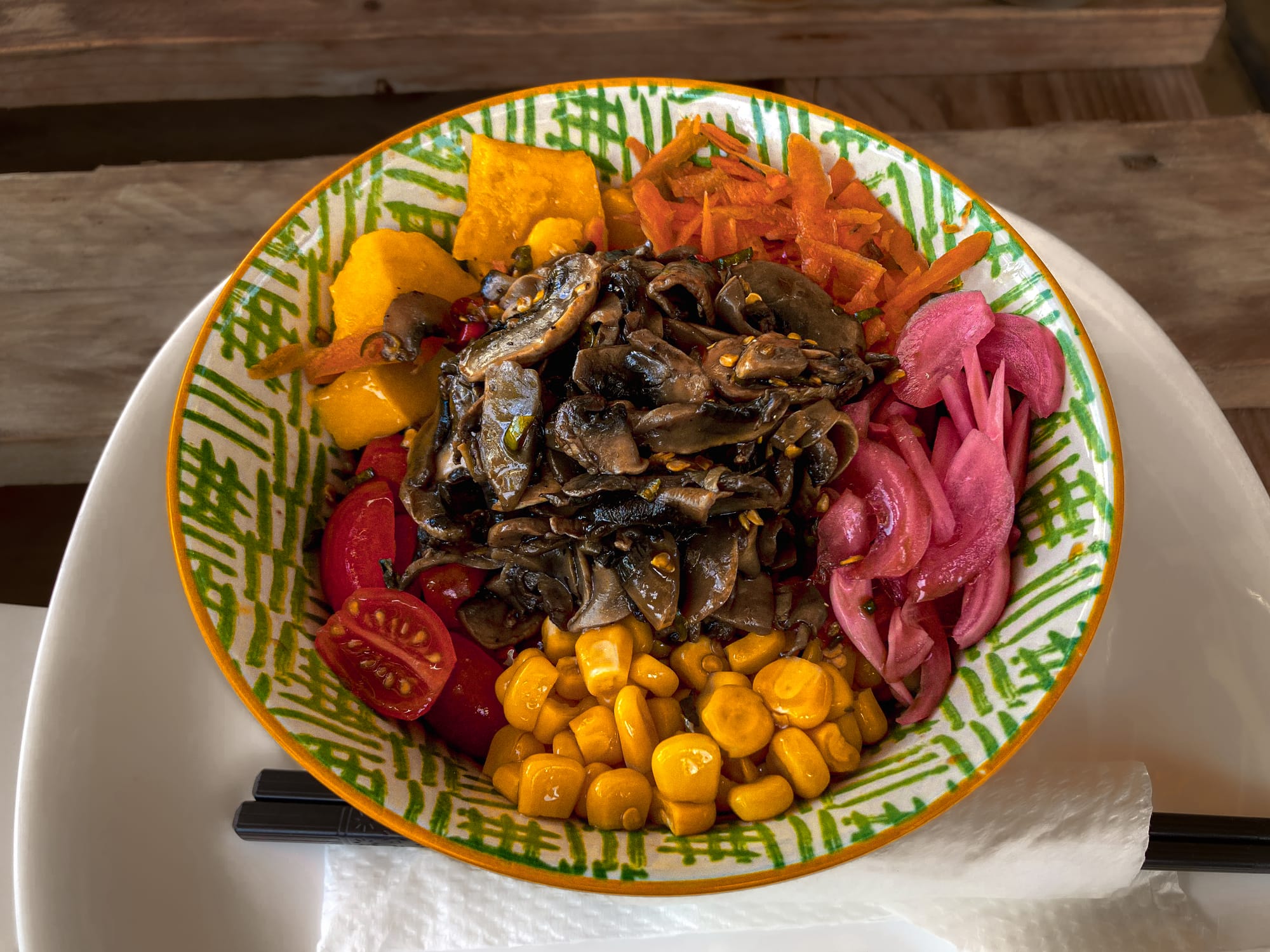
And if you want to try something different but don't have the time to go out, there's a number of restaurants that deliver on the app Glovo.
Resort bubble vs. street life
Spend enough time in Diani and you notice the contrasts. Inside the resort compounds, everything feels curated: pools, manicured gardens, cocktails at sunset. Step outside the gates, and the town hums with local energy.
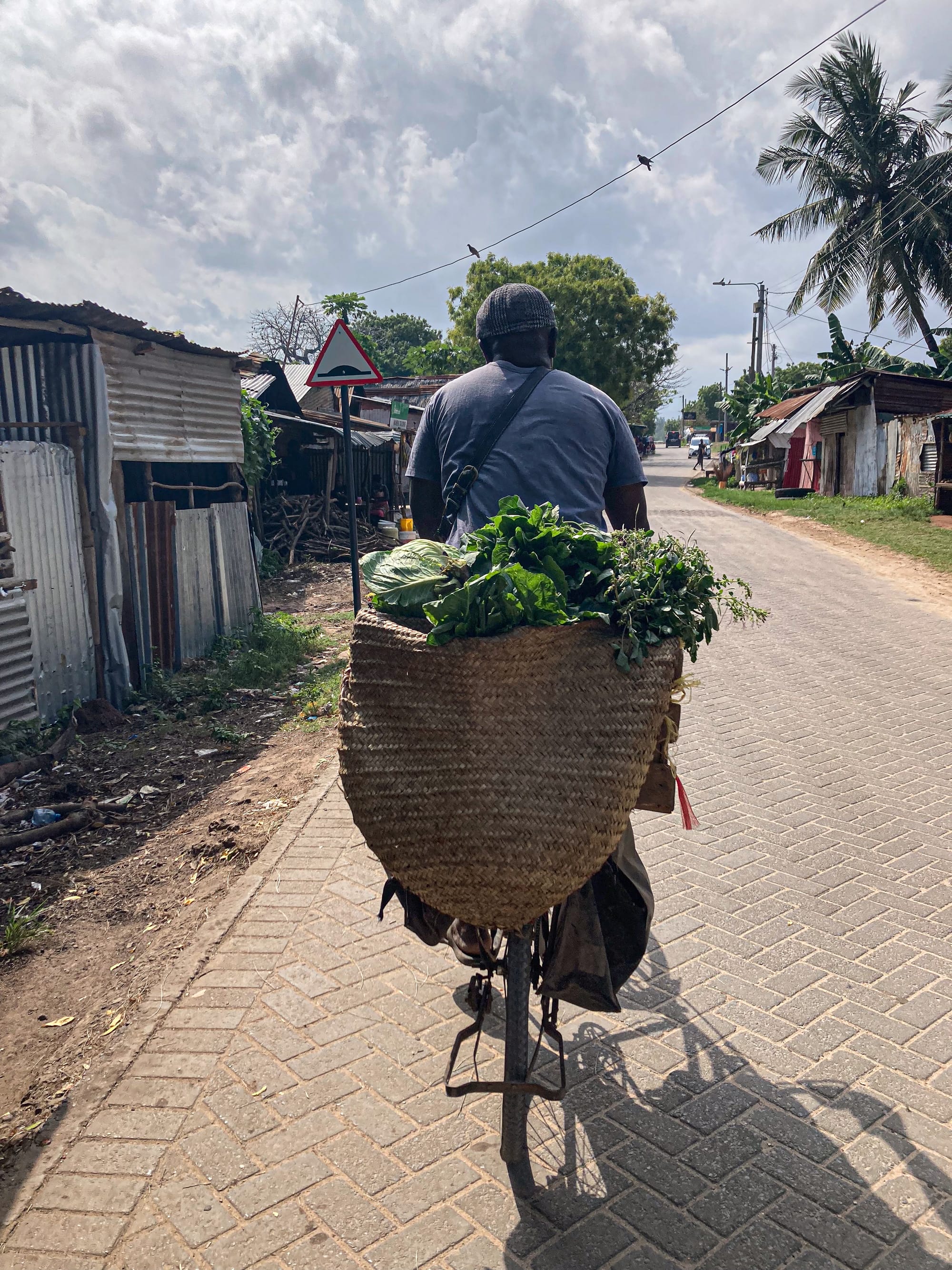
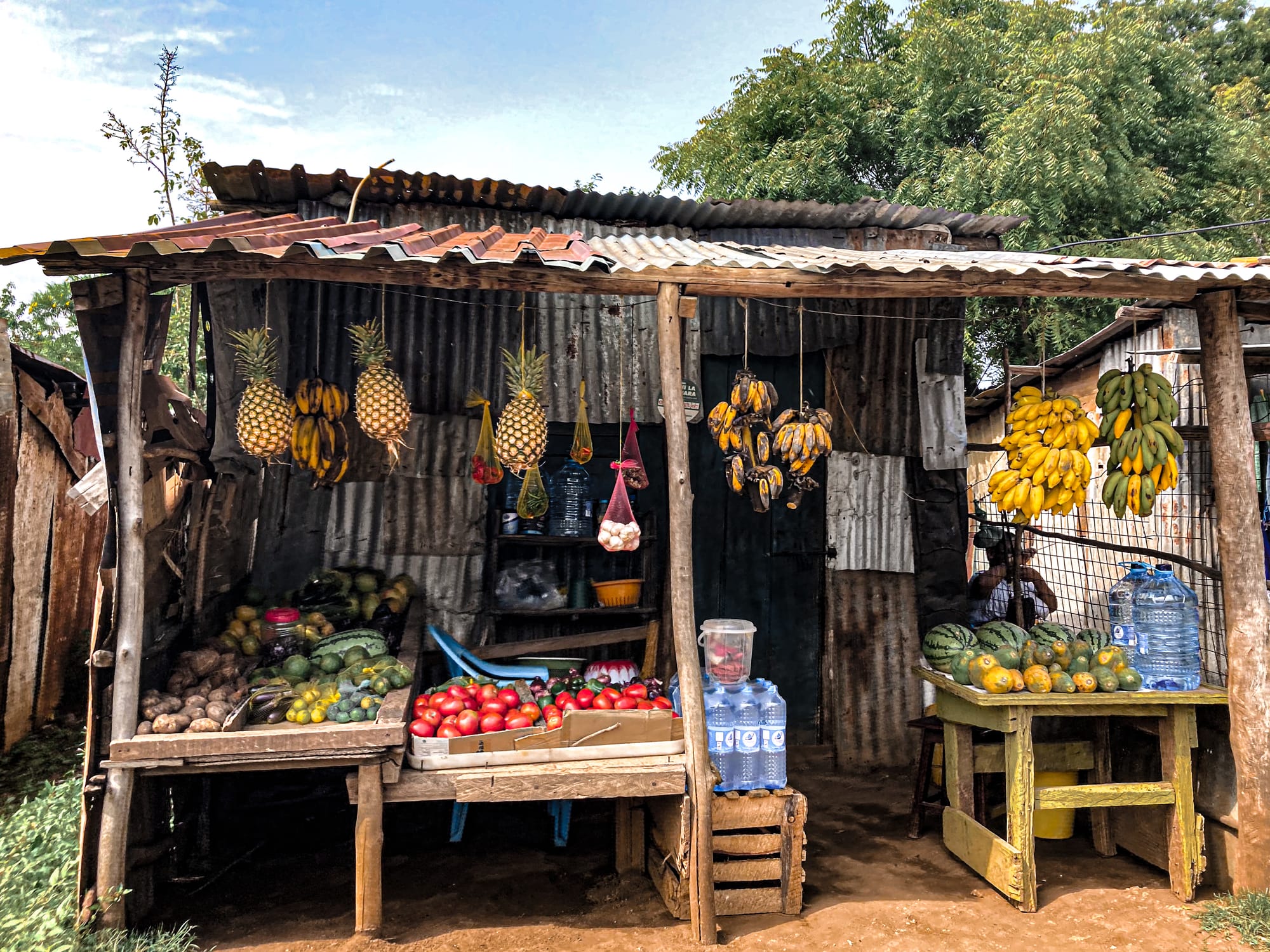
Street scenes in Diani
Fruit stalls spill pineapples and mangoes onto the roadside. Matatus, shared minibuses, weave through traffic, blaring music. Children run barefoot, chasing each other past shops painted in bright colors. It’s vibrant, chaotic, real.
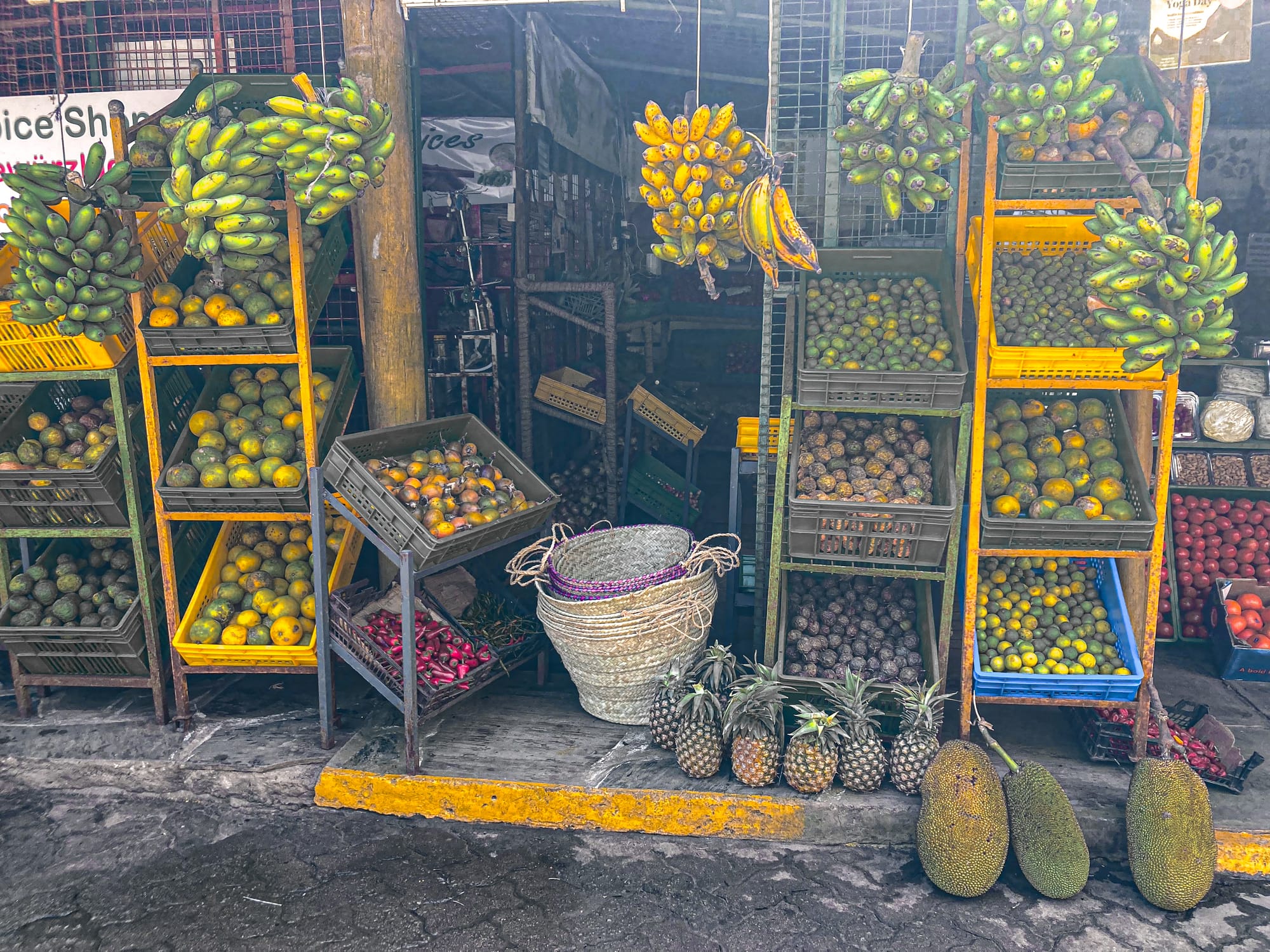
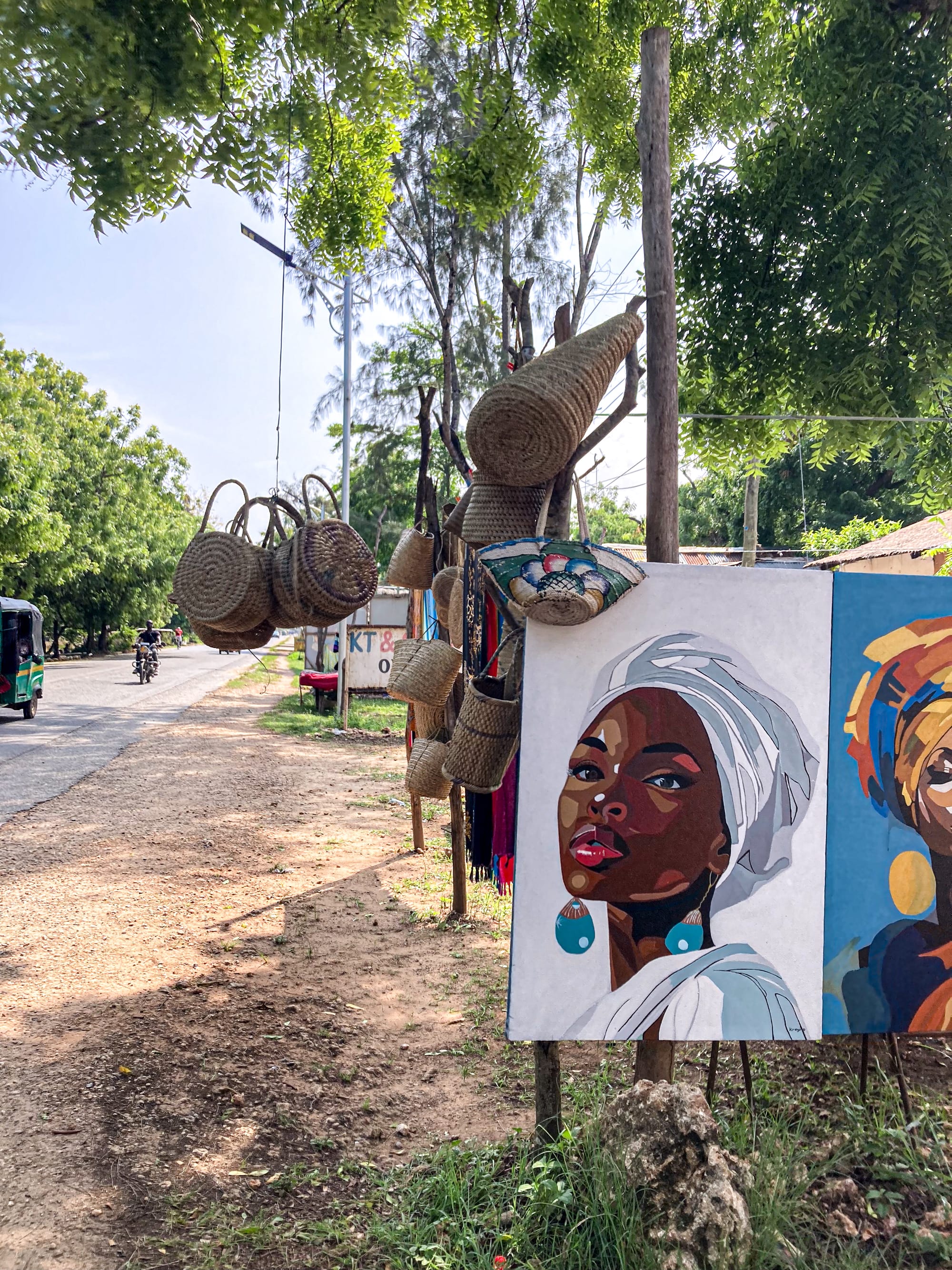
Local markets in Diani
Both sides coexist, sometimes uneasily, but it’s in that tension that Diani’s character emerges. For digital nomads, navigating between the polished and the authentic becomes part of the experience.
The cultural rhythm
Diani’s energy isn’t only found in its beaches or markets. It’s in the culture of family and celebration that underpins coastal Kenya. Evenings carry the sound of music, gatherings stretching late into the night. Weddings spill into the streets, full of color and rhythm. Markets are more than commerce; they’re spaces of conversation and connection.
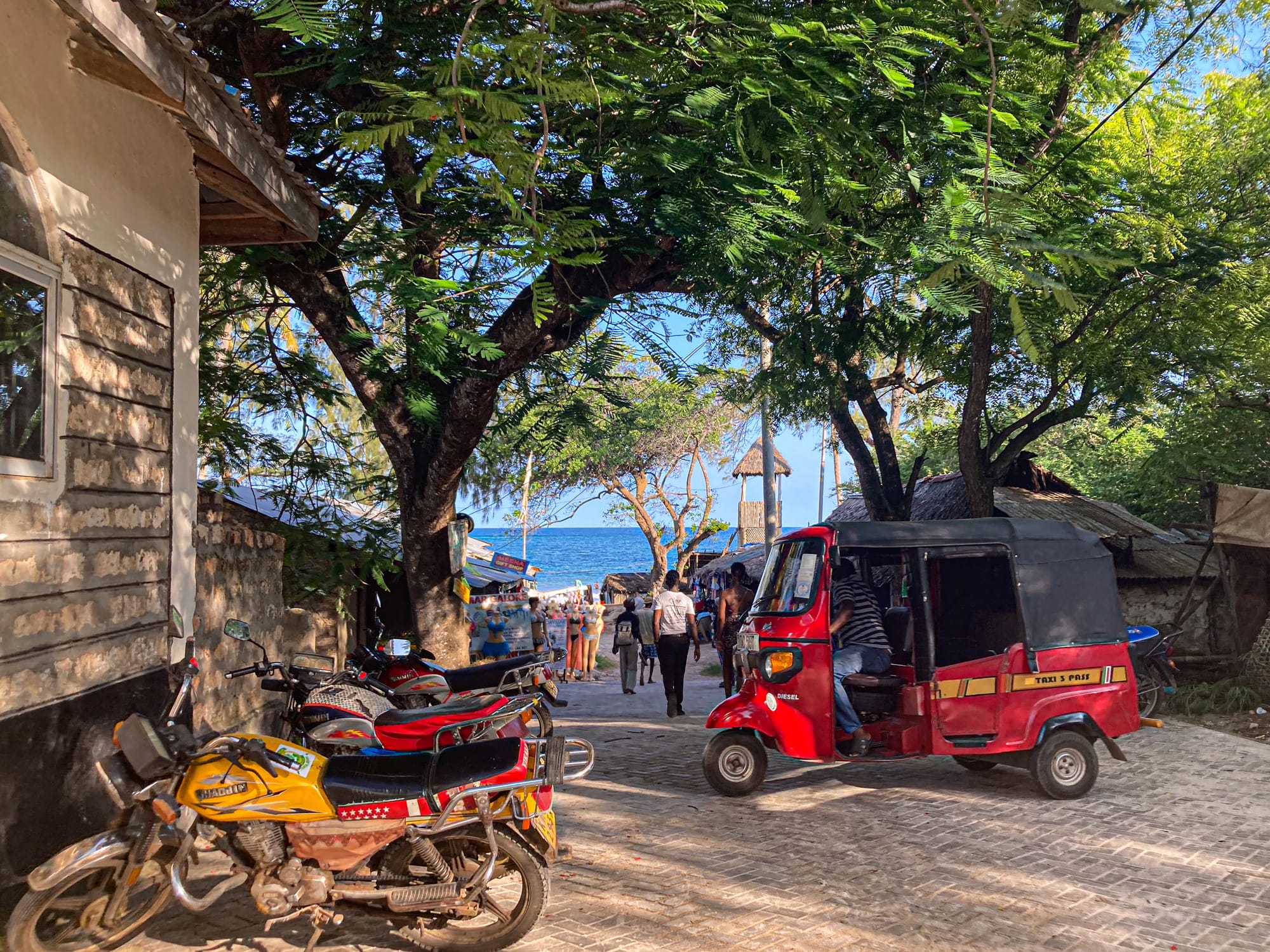
As an outsider, you feel both welcome and reminded that you’re in a place with its own deep traditions, one that predates and extends far beyond the arrival of resorts or remote workers.
Life beyond the beach
Though the beach dominates Diani’s image, life here extends inland. Take the road toward Ukunda and you see another side of the region: small villages, farmland, daily routines unfolding at their own pace. The area feels more grounded, less transient.
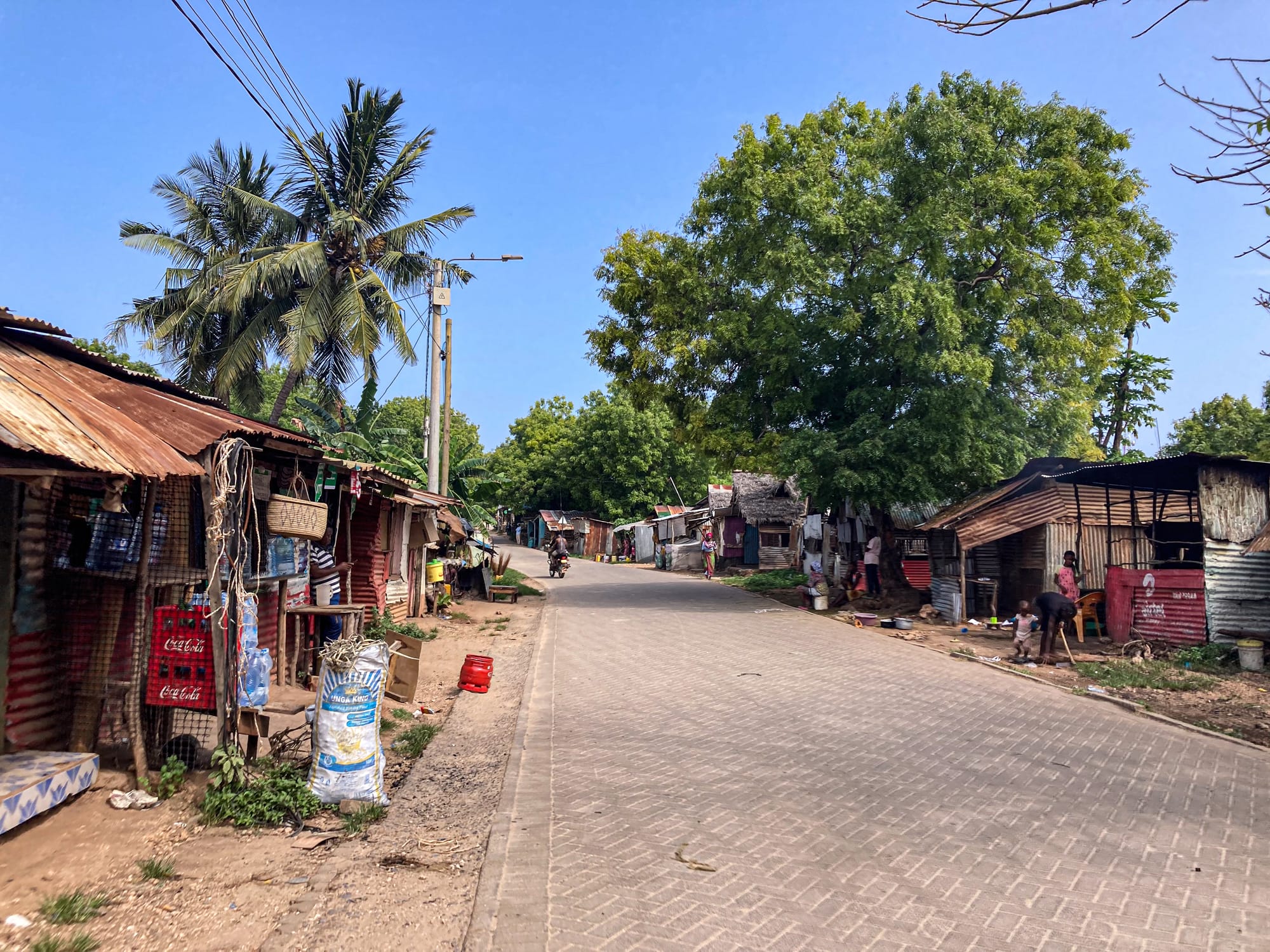
It’s a reminder that Diani isn’t just a postcard destination—it’s home to thousands who live and work here. For nomads, engaging with this dimension of Diani means moving beyond the bubble, whether by exploring local markets, eating at family-run cafés, or simply walking through the neighborhoods instead of sticking to the beach strip.
And beyond Diani itself, there's also so much to see on day or weekend trips.
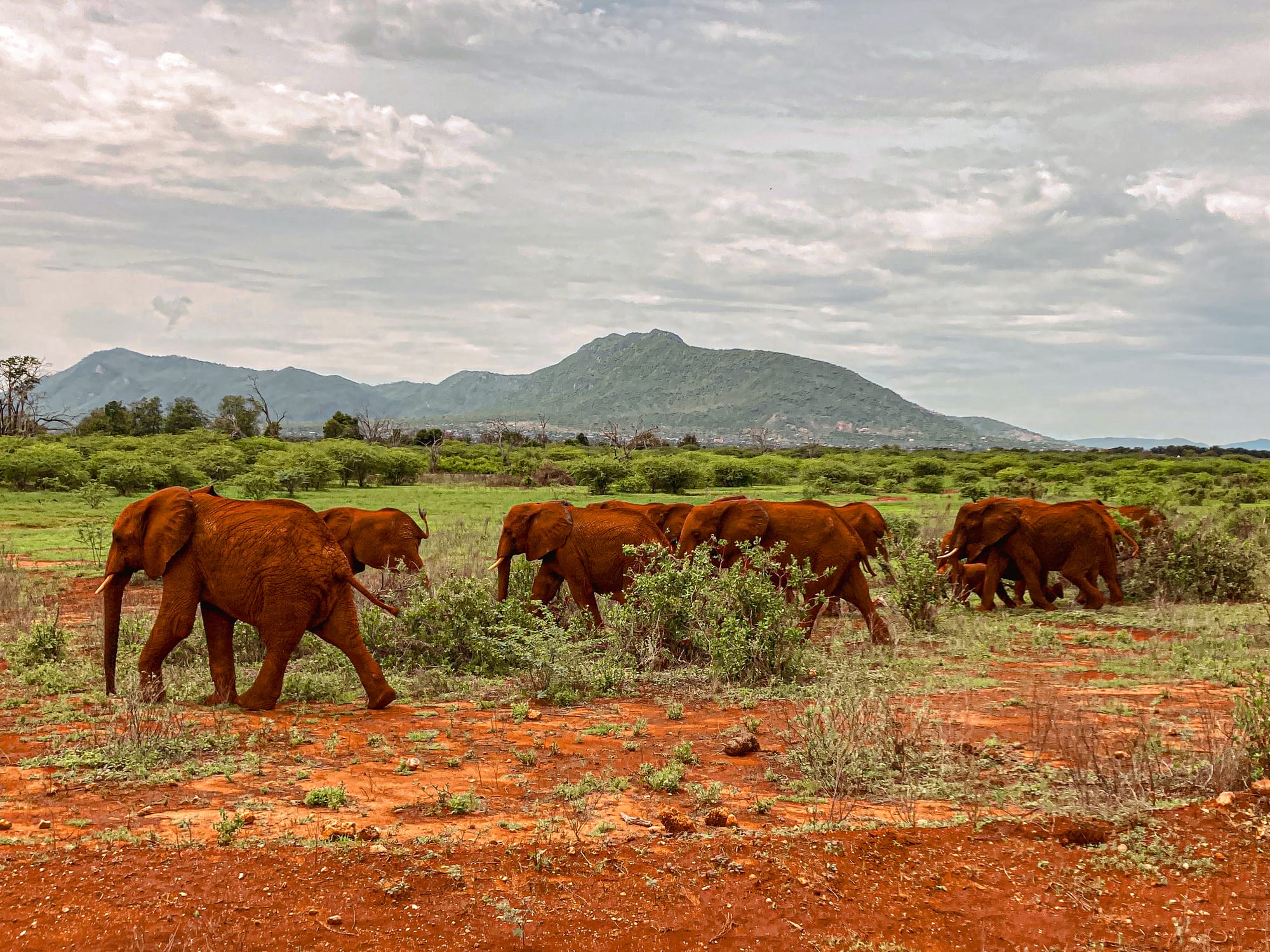
Going on safari to Tsavo East National Park was a real highlight for us.
The nomad community
Diani may not have the density of digital nomads you’d find in Lisbon or Bali, but there’s a growing community here centered around Skippers Coliving. Even in smaller cafés, it’s common to spot laptops open, conversations shifting from travel stories to project ideas. The community feels more intimate and less saturated, which can be refreshing. It’s not about chasing the next networking event—it’s about sharing a bonfire, a safari, or a long dinner with people you might not have met otherwise.
A uniquely Kenyan coastline
Perhaps the most important reminder is that Diani is not interchangeable with any other beach town. It’s not Bali, not Thailand, not a generic resort strip. It’s Kenya’s coastline, shaped by Swahili culture, Indian Ocean trade routes, and local traditions. The food, the music, the rhythms of daily life all reflect this. As a nomad, you’re not just getting an ocean view. You’re stepping into a place with its own deep identity. Recognizing that—and respecting it—is part of living here rather than just passing through.
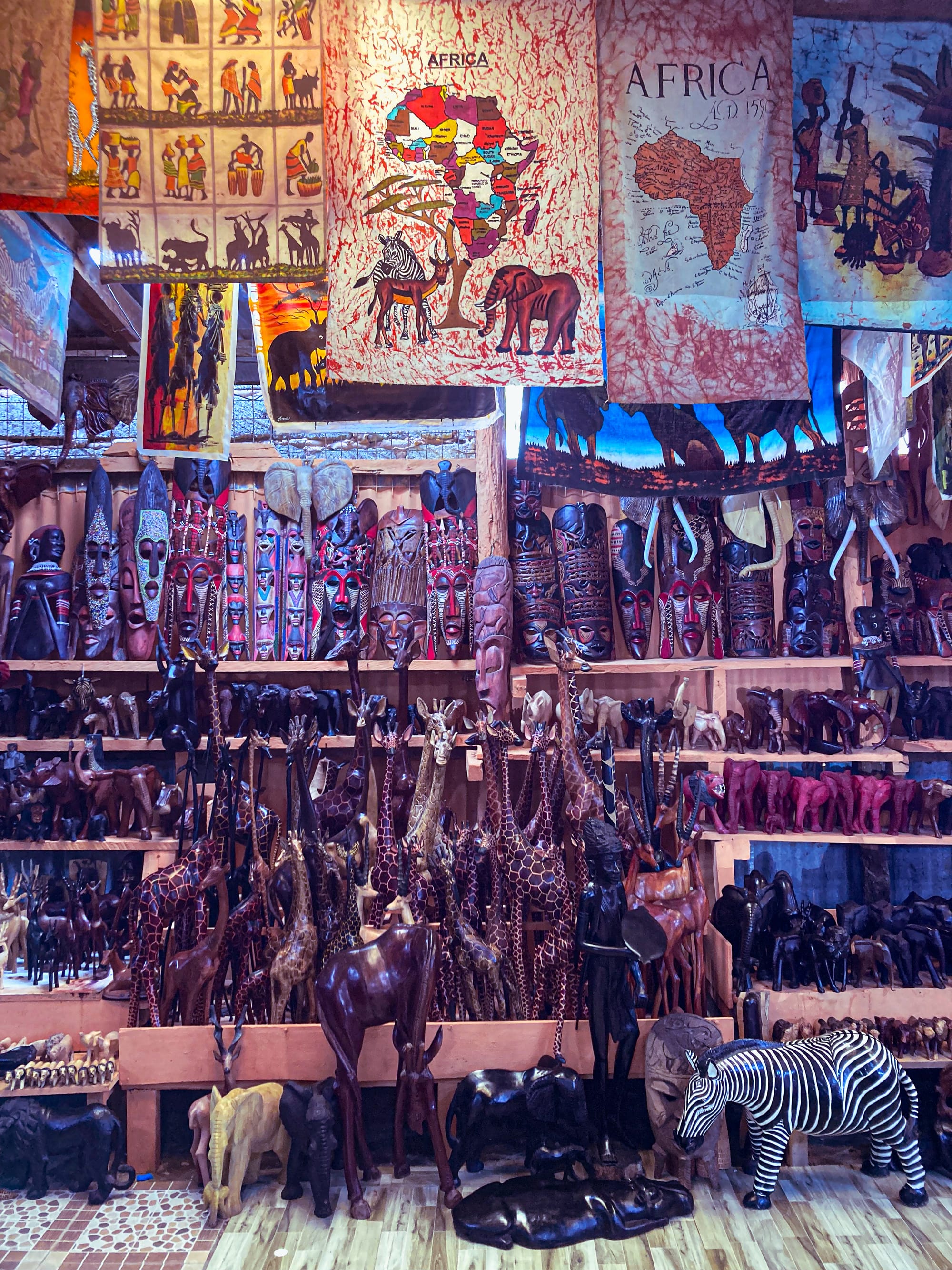
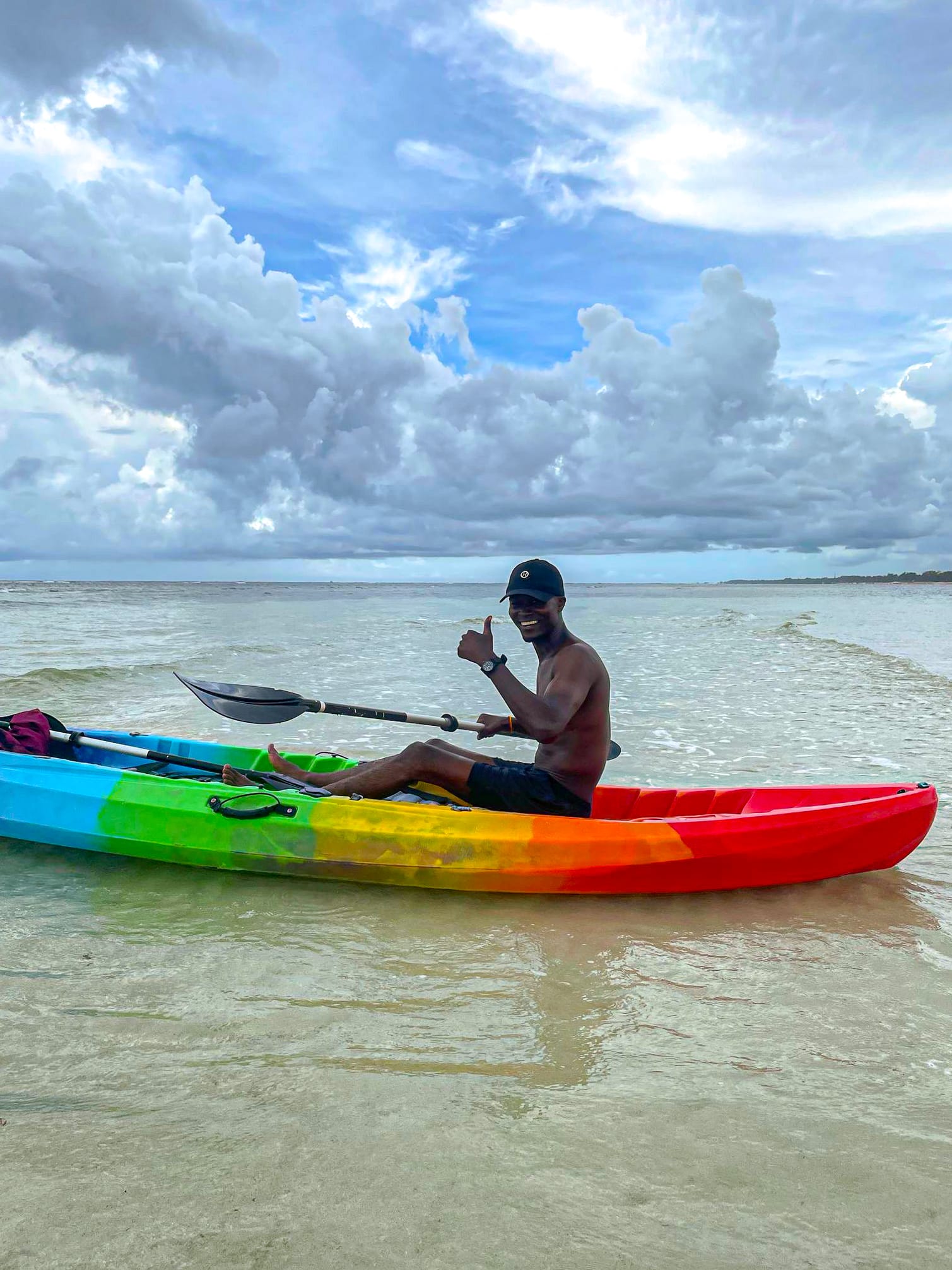
From land to sea in Kenya
Diani is a place of contrasts: between resorts and local streets, work and leisure, global nomadism and rooted community. It’s layered, alive, and distinctly Kenyan. For those who come to live and work here, the reward lies in moving between those layers.






